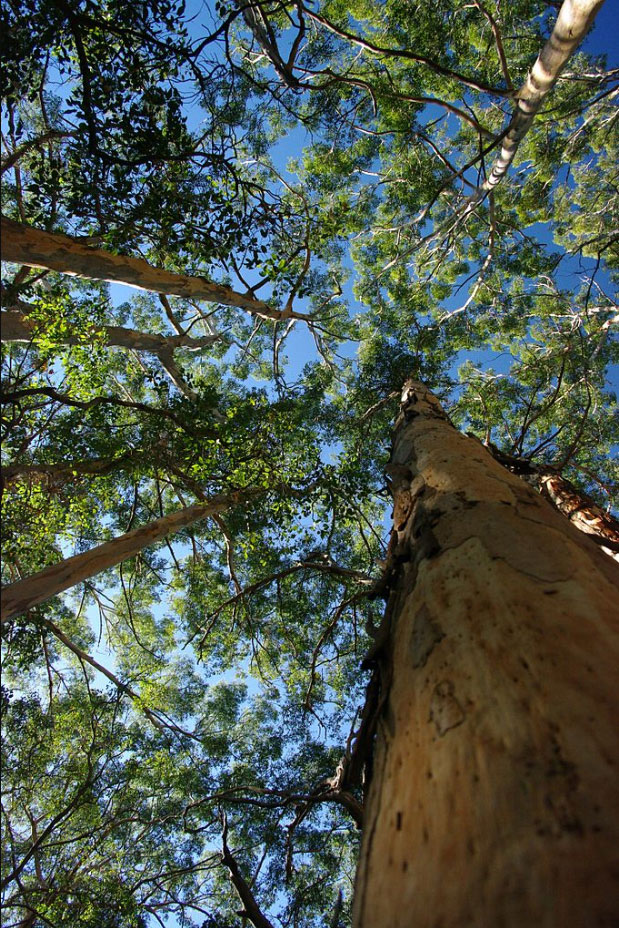Karri

Origin: Western Australia
Family: Myrtaceae
Subfamily: Myrtoideae
Tribe: Eucalypteae
Scientific name: Eucalyptus diversicolor
Indigenous (Noongar) Names: Karri
Ethical concerns: Karri forests are at risk of deforestation and logging. As such, 66% of karri forest is currently within national parks or other protected areas, and logging has been banned in old growth forests.
Magical
Element: Earth
Direction: East
Day: Saturday
Planet: Saturn
Zodiac: Capricorn
Parts used: Leaves, gum, wood
Magical Properties: Health, strength, protection, grounding, longevity, wisdom
Substitutions: Banksia, jarrah
Lore
Tall Karri trees were used as fire lookouts from the 1930s, due to the vantage point provided. Some of these are still up-kept for tourists to climb.
Magical Uses
- Use Karri in protection workings, especially for protection from bush fires.
Practical
Honey made from Karri flowers is popular for its light colour and delicate flavour.
Karri timber is prized for use in roofing support, flooring, furniture, and cabinetry.
Botanical
Karri trees are among the tallest trees in the world, and are the core of the Karri forests of the south-west.
Type: Evergreen tree
Plant size: 10-90m
Bark: White/cream bark turns brown as it matures, and sheds in short ribbons of small polygonal flakes
Leaves: Dark glossy green on top and light underneath, lance-shaped, 9-14cm long and 2-3cm wide
Flowers: Djilba to Birak: 2-3cm diameter flowers with cream stamens, occurring in groups of 7
Fruit: Woody capsules up to 1cm long, containing numerous small seeds
Etymology: The botanical name diversicolor comes from the Latin “diversus” (to turn apart), and refers to the separate colours on different sides of the leaves.
